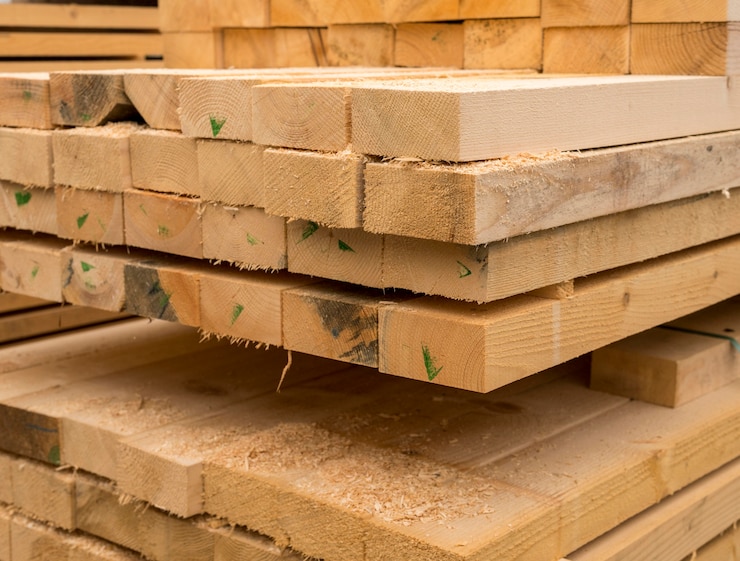Building a deck in Central Texas requires choosing the right wood to withstand the region’s scorching summers, occasional freezes, and high humidity. The best wood for decks Texas homeowners should consider balances durability, cost, and maintenance needs.
In this guide, we’ll cover:
✅ Top 5 Best Deck Woods for Central Texas
✅ Pros & Cons of Each Wood Type
✅ Cost Comparisons (2024 Prices)
✅ Maintenance Tips for Longevity
✅ When to Choose Composite Instead
✅ How to Find Reliable Deck Installation in Texas
Best Budget-Friendly Option
Treated to resist rot, termites, and moisture (critical for Austin’s humidity)
Affordable ($3–$6 per linear foot)
Widely available at local lumberyards
⚠️ Requires annual sealing/staining (or will warp/crack)
⚠️ Can splinter and fade faster than hardwoods
⚠️ Shrinks as it dries (leading to gaps)
Best For: Homeowners who want a low upfront cost and don’t mind yearly maintenance.
Best Natural Rot-Resistant Wood
Naturally repels insects and decay (no chemical treatment needed)
Stays cooler than composite in summer heat
Beautiful grain patterns (ages to a silvery-gray if untreated)
⚠️ Softer than hardwoods (scratches more easily)
⚠️ Costs 2–3x more than pressure-treated pine ($6–$12/LF)
⚠️ Still needs biennial sealing to prevent graying
Best For: Those who want a natural, chemical-free deck with moderate upkeep.
Best Luxury Softwood for Decks
Naturally weather-resistant (lasts 20+ years with care)
Rich, warm color (unlike treated pine’s green tint)
Lightweight yet stable (minimal warping)
⚠️ Expensive ($10–$20/LF due to limited supply)
⚠️ Not as hard as tropical woods (dents easier)
⚠️ Fades without yearly oiling
Best For: Homeowners who want a high-end natural look and can commit to regular maintenance of Deck Installation.

Most Durable Wood for Texas Decks
Extremely dense (3x harder than oak, resists scratches)
Natural oils repel water, rot, and termites
Lasts 40+ years (outperforms composites in longevity)
⚠️ Very expensive ($15–$30/LF)
⚠️ Requires special tools for cutting/drilling
⚠️ Can get extremely hot in direct sun
Best For: Those who want a near-indestructible deck and don’t mind the higher upfront cost.
Best Low-Maintenance Option
No staining, sealing, or sanding ever
Won’t splinter, rot, or attract termites
Warranties of 25–50 years
⚠️ Higher initial cost ($12–$25/LF)
⚠️ Can get hotter than wood (choose lighter colors)
⚠️ Not fully natural (some prefer real wood’s look/feel)
Best For: Busy homeowners who want a hassle-free deck with minimal upkeep.
| Wood Type | Cost (Per Linear Foot) | Lifespan | Maintenance | Heat Resistance |
|---|---|---|---|---|
| Pressure-Treated Pine | $3–$6 | 10–15 yrs | Annual sealing | Moderate |
| Cedar | $6–$12 | 15–20 yrs | Every 2 years | Good |
| Redwood | $10–$20 | 20–25 yrs | Annual oiling | Good |
| Tropical Hardwood | $15–$30 | 40+ yrs | Minimal | Poor (gets very hot) |
| Composite | $12–$25 | 25–50 yrs | None | Poor (varies by color) |
Heat: Darker woods (like Ipe) can burn bare feet in summer.
Humidity: Woods that resist swelling/shrinking (cedar, composite) fare best.
Freezes: Pressure-treated pine handles temperature swings well.
Low-Maintenance: Composite, tropical hardwoods
Moderate: Cedar, redwood
High: Pressure-treated pine
Cheapest short-term: Pressure-treated pine
Best long-term investment: Composite or tropical hardwood
Seal pressure-treated wood within 6 months of installation.
Use stainless steel screws (regular ones corrode in humidity).
Leave gaps between boards for drainage (critical in rainy seasons).
Clean annually with a deck cleaner to prevent mold/mildew.
Consider shade solutions (pergolas, awnings) to reduce UV damage.
While DIY is possible for small decks, pros are worth it for:
Complex designs (multi-level, curved edges)
Elevated decks (safety/structural concerns)
Permitting (Austin and San Antonio have strict codes)
Warranty protection (most contractors offer 1–5 years)
Best Budget Wood: Pressure-treated pine
Best Mid-Range Natural Wood: Cedar
Best Premium Wood: Ipe (if you can afford it)
Best No-Maintenance Option: Composite
Ready to Build? Get free quotes from vetted Texas deck builders today!